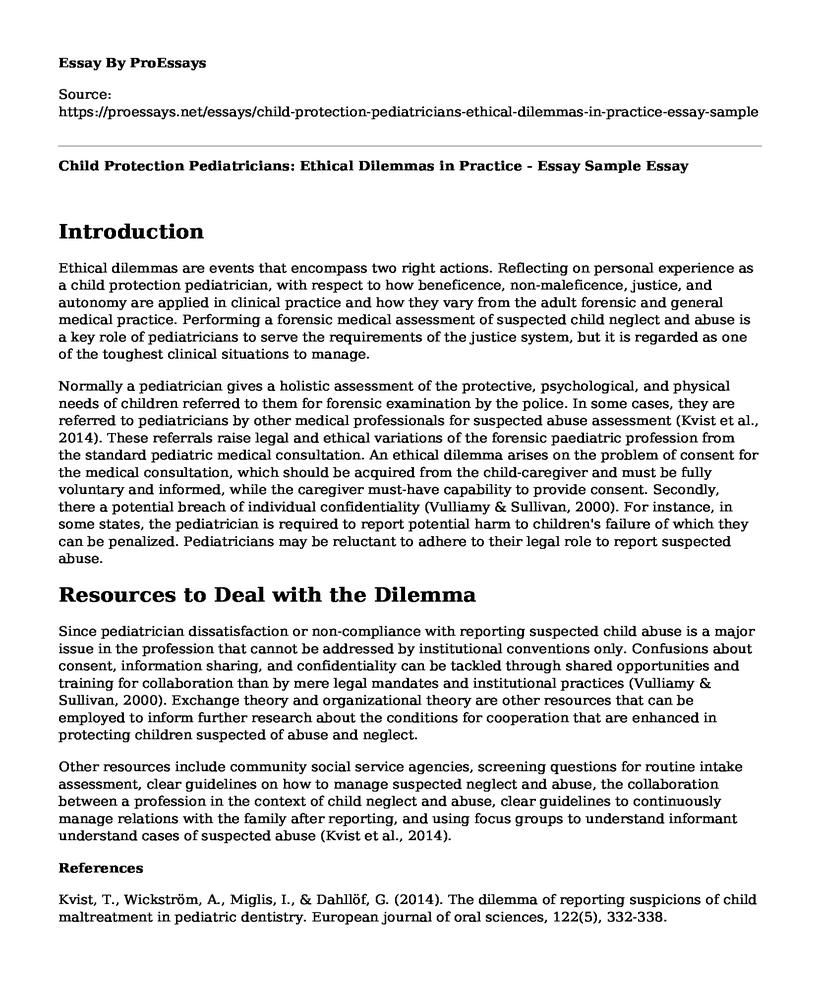Introduction
Ethical dilemmas are events that encompass two right actions. Reflecting on personal experience as a child protection pediatrician, with respect to how beneficence, non-maleficence, justice, and autonomy are applied in clinical practice and how they vary from the adult forensic and general medical practice. Performing a forensic medical assessment of suspected child neglect and abuse is a key role of pediatricians to serve the requirements of the justice system, but it is regarded as one of the toughest clinical situations to manage.
Normally a pediatrician gives a holistic assessment of the protective, psychological, and physical needs of children referred to them for forensic examination by the police. In some cases, they are referred to pediatricians by other medical professionals for suspected abuse assessment (Kvist et al., 2014). These referrals raise legal and ethical variations of the forensic paediatric profession from the standard pediatric medical consultation. An ethical dilemma arises on the problem of consent for the medical consultation, which should be acquired from the child-caregiver and must be fully voluntary and informed, while the caregiver must-have capability to provide consent. Secondly, there a potential breach of individual confidentiality (Vulliamy & Sullivan, 2000). For instance, in some states, the pediatrician is required to report potential harm to children's failure of which they can be penalized. Pediatricians may be reluctant to adhere to their legal role to report suspected abuse.
Resources to Deal with the Dilemma
Since pediatrician dissatisfaction or non-compliance with reporting suspected child abuse is a major issue in the profession that cannot be addressed by institutional conventions only. Confusions about consent, information sharing, and confidentiality can be tackled through shared opportunities and training for collaboration than by mere legal mandates and institutional practices (Vulliamy & Sullivan, 2000). Exchange theory and organizational theory are other resources that can be employed to inform further research about the conditions for cooperation that are enhanced in protecting children suspected of abuse and neglect.
Other resources include community social service agencies, screening questions for routine intake assessment, clear guidelines on how to manage suspected neglect and abuse, the collaboration between a profession in the context of child neglect and abuse, clear guidelines to continuously manage relations with the family after reporting, and using focus groups to understand informant understand cases of suspected abuse (Kvist et al., 2014).
References
Kvist, T., Wickström, A., Miglis, I., & Dahllöf, G. (2014). The dilemma of reporting suspicions of child maltreatment in pediatric dentistry. European journal of oral sciences, 122(5), 332-338. http://www.diva-portal.org/smash/get/diva2:763897/FULLTEXT02
Vulliamy, A. P., & Sullivan, R. (2000). Reporting child abuse: pediatricians’ experiences with the child protection system. Child abuse & neglect, 24(11), 1461-1470. https://doi.org/10.1016/S0145-2134(00)00199-X
Cite this page
Child Protection Pediatricians: Ethical Dilemmas in Practice - Essay Sample. (2023, Aug 25). Retrieved from https://proessays.net/essays/child-protection-pediatricians-ethical-dilemmas-in-practice-essay-sample
If you are the original author of this essay and no longer wish to have it published on the ProEssays website, please click below to request its removal:
- Cult of Likability Essay
- Essay Sample on Mental Illness in the Community
- Essay Example on LGBT Community Uses Mainstream Media for Social Acceptance
- Essay Sample on Aging Population: Impacts, Challenges and Opportunities
- Essay on Myelodysplastic Syndrome: Changes in Mechanical, Physical & Biochemical Function
- Class and Power Dynamics in Wuthering Heights and Recitatif - Essay Sample
- Apply DNP Program: Master's Foundation in Quality, Leadership & Evidence-Based Practice - Essay Sample







